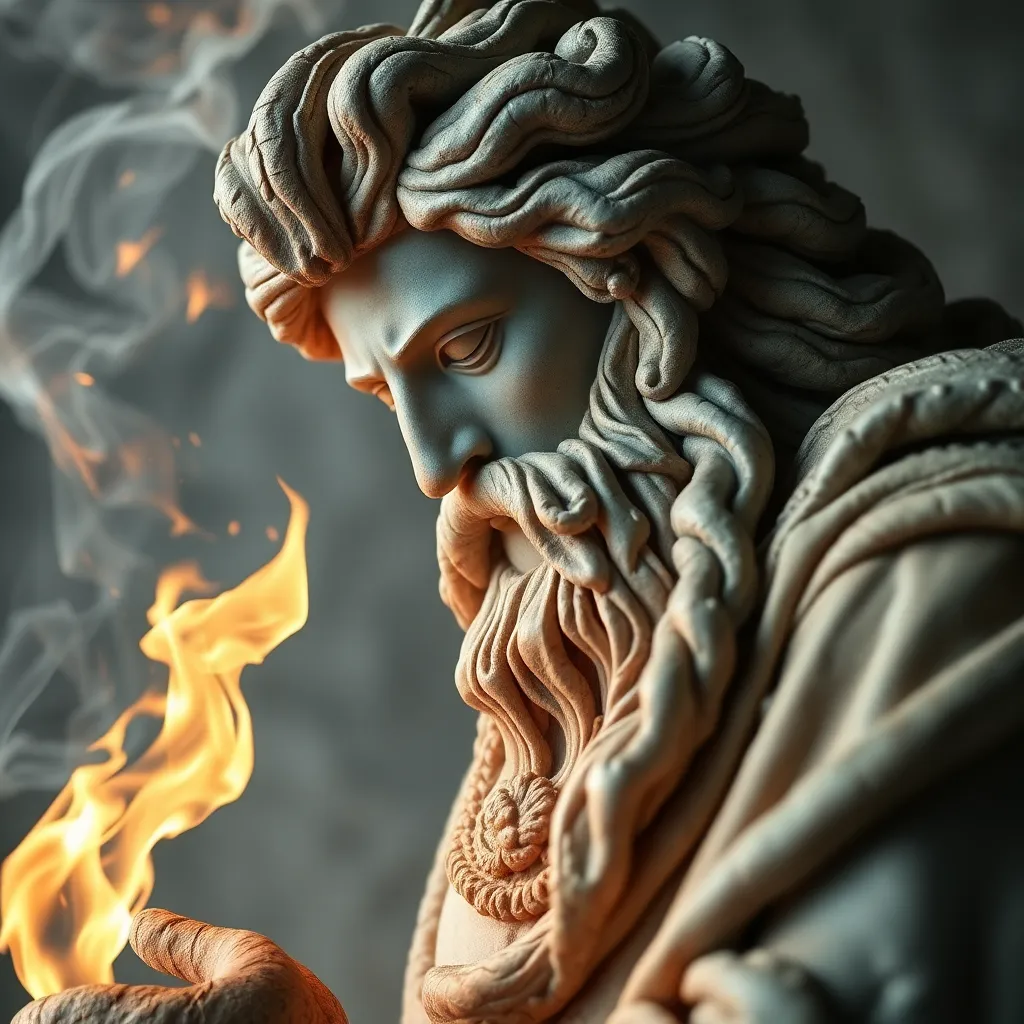Hephaestus and the Concept of Beauty: Crafting Aesthetics in Myth
I. Introduction
Hephaestus, the Greek god of fire and craftsmanship, holds a unique position within the pantheon of Greek mythology. Unlike other deities who embody idealized physical beauty, Hephaestus is often depicted as physically imperfect. This contrast raises intriguing questions about the nature of beauty itself, particularly in ancient Greek culture where aesthetics were highly valued. In this article, we will explore Hephaestus’s role in shaping the concept of beauty, his contributions as a craftsman, and how his legacy continues to influence modern interpretations of aesthetics.
II. Hephaestus: The God of Fire and Craftsmanship
Hephaestus was born to Hera, often said to be without a father, or in some accounts, to Zeus. His birth was marked by a dramatic rejection; Hera, disappointed by his appearance, cast him from Mount Olympus. This origin story sets the stage for Hephaestus’s lifelong struggle with his physical form and societal acceptance.
As the god of blacksmiths, artisans, and sculptors, Hephaestus was revered for his skill in metalwork and craftsmanship. He created magnificent objects, from weapons of war to intricate jewelry, which were not only functional but also aesthetically pleasing.
In contrast to the other Olympian gods, who were often depicted as paragons of beauty and perfection, Hephaestus’s appearance was marked by deformity. This divergence from traditional beauty standards positions him uniquely within Greek mythology.
III. The Dual Nature of Beauty in Mythology
Beauty in ancient Greek culture was multifaceted, often defined not just by physical attributes but also by moral virtue and inner character. The Greeks believed that true beauty arose from a harmony between form and function, where physical appearance was a reflection of one’s inner qualities.
- Physical Beauty: Valued for its aesthetic appeal, often associated with youth and health.
- Inner Virtue: Qualities such as wisdom, courage, and integrity that contribute to a person’s overall beauty.
Hephaestus embodies a unique perspective in this discourse. Despite his physical imperfections, he exemplifies inner virtue through his work and creativity, challenging conventional definitions of beauty.
IV. Crafting Beauty: Hephaestus’s Masterpieces
Hephaestus’s contributions to beauty are best illustrated through his remarkable creations. Among his most notable works are:
- The armor of Achilles, which symbolized strength and heroism.
- The shield of Heracles, adorned with intricate designs representing the cosmos.
- The golden automatons that served as helpers and protectors.
Each of these masterpieces reflects Hephaestus’s exceptional skill and the aesthetic ideals of the time. His craftsmanship was not merely about function but also about the beauty of the forms he created, emphasizing how artistry can elevate everyday objects into something extraordinary.
V. Hephaestus and the Aesthetic of Imperfection
Hephaestus’s physical deformities—described as being lame and disfigured—serve as a powerful narrative element in his myth. Rather than detracting from his value, these imperfections contribute to the complexity of his character and the beauty of his story.
In many cultures, imperfection can enhance beauty, a concept known as “wabi-sabi” in Japanese aesthetics. Hephaestus exemplifies this principle, demonstrating how resilience and creativity can emerge from struggle.
Stories such as his rejection from Olympus and his subsequent rise as a master craftsman illustrate the idea that true beauty lies not in physical perfection but in the ability to overcome adversity and create something meaningful.
VI. The Role of Hephaestus in Other Myths
Hephaestus’s relationships with other gods and goddesses further illuminate his significance in the mythological landscape. His marriage to Aphrodite, the goddess of love and beauty, represents a fascinating juxtaposition between physical allure and creative genius.
Notable myths featuring Hephaestus include:
- The story of how he crafted the first woman, Pandora, who was endowed with beauty yet brought misfortune.
- The tale of his revenge against Aphrodite and Ares, which emphasizes themes of betrayal and the complexities of love.
These narratives not only highlight Hephaestus’s craftsmanship but also his influence on human aesthetics and artistry, as his creations often embody the struggles and triumphs of the gods.
VII. Contemporary Interpretations of Hephaestus and Beauty
In modern literature and art, Hephaestus continues to be a compelling figure. His story resonates with contemporary discussions on beauty, creativity, and acceptance of imperfection. Artists and writers draw upon his myth to explore themes of resilience and the transformative power of art.
Contemporary interpretations often challenge traditional notions of aesthetics, suggesting that beauty can be found in diversity and individuality. Hephaestus serves as an archetype for those who create despite societal expectations, celebrating the beauty of the unconventional.
VIII. Conclusion
Hephaestus’s contributions to the concept of beauty within Greek mythology are profound and multifaceted. His unique position as the god of craftsmanship, combined with his physical imperfections, invites us to reconsider our definitions of beauty. Rather than being confined to physical appearance, beauty emerges through creativity, resilience, and the ability to craft meaning from our experiences.
The lasting impact of Hephaestus’s myth on modern perceptions of craftsmanship and aesthetics encourages us to embrace individuality and appreciate the artistry in imperfection. Ultimately, the relationship between beauty and creativity, as illustrated by Hephaestus, remains an enduring theme in both mythology and real life.




